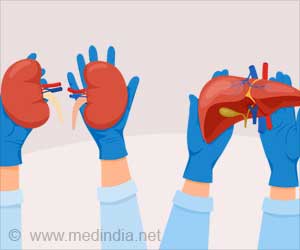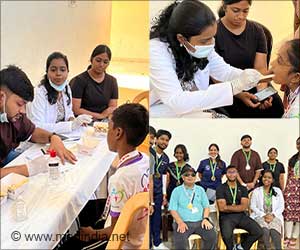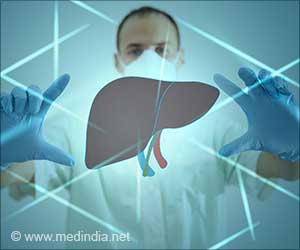
Hospitals may be reluctant to approve lung transplantation in systemic sclerosis patients due to their concerns about extra-pulmonary involvement that might affect the patients'' short- and long-term survival.
Researchers at Columbia University College of Physicians and Surgeons in New York City wanted to find out if adults with systemic sclerosis have a higher one-year mortality rate after lung transplantation compared to patients with interstitial lung disease (ILD) or pulmonary arterial hypertension (PAH) not due to SSc. They performed a retrospective cohort study of 3,763 adults who had undergone double or single lung transplantation in the United States between May 4, 2005 (the date of implementation of the lung allocation score) and September 14, 2012.
"Although many transplant centers are hesitant to offer lung transplantation to patients with SSc due to concern about extra-pulmonary involvement that might affect survival, there are very few data to support the impression that survival is worse in SSc patients compared to non-SSc patients," said Elana J. Bernstein, MD, MSc of Columbia University College of Physicians and Surgeons, and a lead author of the study. "In fact, previous studies - albeit limited to small case series and small cohort studies - suggest that adults with SSc have similar mortality rates to adults with ILD and PAH following lung transplantation. We actually hoped to confirm the findings of these prior small studies, thereby perhaps providing an impetus for transplant programs to begin to change their practices and offer lung transplantation to greater numbers of carefully selected patients with SSc who are otherwise suitable candidates for lung transplantation."
The researchers used data provided by the United Network for Organ Sharing. Subjects were included if they were at least 18 years of age at the time of lung transplantation surgery; had a diagnosis of SSc, ILD or PAH; and had transplantation surgery at a center that has performed at least one such procedure for SSc. Subjects were excluded if they had received a heart-lung transplant; if they received a lung from a living donor; or if they had missing data on survival time.
There were 3,763 adults transplanted during the study period who met the study''s inclusion criteria: 229 with SSc, 201 with PAH and 3,333 with ILD. In multivariable-adjusted analyses, a diagnosis of SSc was associated with a 48-percent relative increase in the one-year mortality rate compared to a diagnosis of ILD. However, a diagnosis of SSc was not associated with a relative increase in the one-year mortality rate compared to a diagnosis of PAH, a widely accepted indication for lung transplantation.
The study''s authors concluded that rather than denying SSc patients lung transplantation as a treatment option because of their diagnosis, other variables need to be identified that will enable risk stratification of these patients prior to surgery, with particular attention to modifiable risk factors.
Advertisement
Funding sources for this study included partial support from the Health Resources and Services Administration. Dr. Bernstein''s work was also supported by a New York-Presbyterian Hospital Translational Research Grant.
Advertisement
 
Paper Number: 1797
One-Year Survival of Adults with Systemic Sclerosis Following Lung Transplantation: A Nationwide Cohort Study
Elana J. Bernstein, Eric R. Peterson, Joan M. Bathon and David J. Lederer, Rheumatology, Columbia University College of Physicians & Surgeons, New York, NY
Background/Purpose: Lung transplantation is a potentially life-saving treatment for patients with systemic sclerosis (SSc) who have developed end-stage lung disease due to interstitial lung disease and/or pulmonary hypertension. However, many transplant programs are hesitant to offer lung transplantation (LTx) to those with SSc due to concerns about extra-pulmonary involvement that might affect short- and long-term survival. However, survival data for lung transplantation in SSc are sparse. The primary aim of this study was to determine whether adults with SSc have higher 1-year mortality rates after LTx compared to those with interstitial lung disease (ILD) or pulmonary arterial hypertension (PAH) not due to SSc. We hypothesized that adults with SSc would have higher 1-year mortality rates after LTx than those with ILD or PAH not due to SSc.
Methods: We performed a retrospective cohort study of adults who underwent double or single LTx in the United States between May 4, 2005 (the date of implementation of the lung allocation score) and September 14, 2012. Data were provided by the United Network for Organ Sharing, a non-profit organization that records data on all solid organ transplants performed in the US. Subjects were included if they were at least 18 years of age at the time of LTx; had a diagnosis of SSc, ILD, or PAH; and were transplanted at a center that has performed at least 1 LTx for SSc. Subjects were excluded if they had received a heart-lung transplant; if they received a LTx from a living donor; or if they had missing data on survival time. We modeled diagnosis (SSc) as the independent binary variable of interest in stratified Cox regression models where survival time was the dependent variable, adjusting for recipient, donor, and procedural factors (Table 1). We used multiple imputation to account for missing covariate data.
Results: A total of 3763 adults were transplanted during the study period and met inclusion criteria: 229 with SSc, 201 with PAH, and 3333 with ILD (Table 1). The 1-year unadjusted mortality rate following LTx per 100 person-years was 21.4 among adults with SSc, 19.0 among adults with PAH, and 17.8 among adults with ILD. A diagnosis of SSc was associated with a multivariable-adjusted 48% relative increase in the 1-year mortality rate compared to a diagnosis of ILD (HR 1.48, 95% CI 1.01-2.17). However, a diagnosis of SSc was not associated with a relative increase in the 1-year mortality rate compared to a diagnosis of PAH (HR 0.85, 95% CI 0.50-1.44).
Conclusion: Adults with SSc had a 48% increased risk of death at 1 year following LTx compared to adults with ILD, but no increase in risk of death at 1 year compared to adults with PAH. Rather than denying SSc patients LTx because of their SSc diagnosis, variables need to be identified that will enable risk stratification of these patients prior to LTx, with particular attention to modifiable risk factors.
Disclosure:
E. J. Bernstein, None; E. R. Peterson, None; J. M. Bathon, None; D. J. Lederer, None.
Source-Newswise










